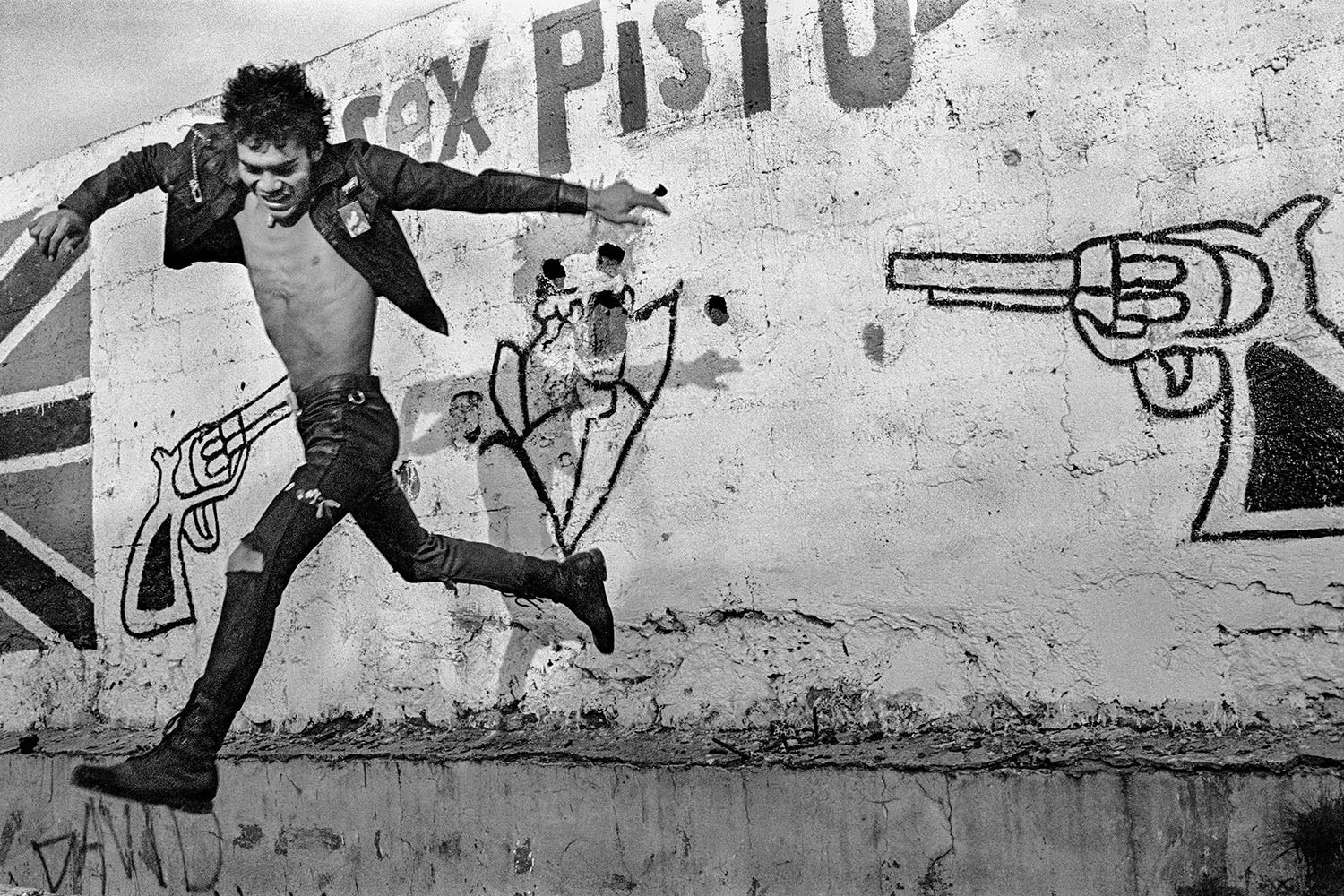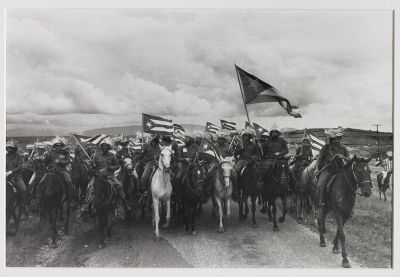
Pablo Ortíz Monasterio (Mexican, born in 1952). Volando bajo (Flying Low), c. 1986. Gelatin silver print. Cantor Arts Center, Stanford University, Promised gift from the Judy and Sidney Zuber Collection of Latin American Photography. (Image credit: Pablo Ortíz Monasterio, Courtesy: Almanaque. © Pablo Ortíz Monasterio)
Cultural traditions, artistic innovations, and social, political, and economic change are central themes of a new Latin American photography exhibition at the Cantor Arts Center. Beyond Here: The Judy and Sidney Zuber Collection of Latin American Photography, on view through Jan. 28, 2024, celebrates influential photographers from Central and South America, surveying a remarkable period of industrial, artistic, and political revolutions across the Americas in the 20th century.
Drawn from the nuanced Spanish phrase “más allá” – from a 1961 song by the Mexican musical trio Los Tres Diamantes – which can refer to geographical distance, conversation, or the afterlife, the exhibition’s title alludes to the many possible futures contained in the photographs.
“The work in the Zuber Collection serves as an invaluable example of art’s capacity to examine complex histories, and Beyond Here is just the beginning,” said Maggie Dethloff, assistant curator of photography and new media. “In the 20th century, economic development, political revolution, and social, cultural, and artistic movements, among other forces of change, created circumstances ripe with new possibilities for self-determination across Latin America.”
Beyond Here presents photographs not as static artifacts but as dynamic visualizations of stories that have long informed cultures of Latin America. “This exhibition considers how the showcased artists have engaged with and helped shape the national histories and identities in the countries in which they worked in the wake of myriad changes,” said Dethloff.

Image credit: Harrison Truong

Image credit: Courtesy of the artist and Lisa Sette Gallery © Luis González Palma

Image credit: Courtesy of the artist © Marta María Pérez Bravo

Image credit: Cantor Arts Center

Image credit: Courtesy of the artist. © Cristina Kahlo

Image credit: Pablo Ortíz Monasterio, Courtesy: Almanaque. © Pablo Ortíz Monasterio

Image credit: Courtesy Casa MAB/Archivo Manuel Álvarez Bravo, S.C © 2023 Estate of Manuel Alvarez Bravo

Image credit: Courtesy of the artist. © Graciela Iturbide

Image credit: © The Estate of Horacio Coppola, Courtesy of Galería Jorge Mara – La Ruche

Image credit: Harrison Truong
Beyond Here features 34 works from a promised gift of 76 by photographers from Argentina, Brazil, Colombia, Cuba, Guatemala, Mexico, Panama, Peru, and Venezuela, as well as expats and visitors from abroad. The images span 20th-century photographic traditions in social documentation, studio photography, photojournalism, modernism, and more contemporary experimentations with process and narrative structure.
Some of the photographs also serve as historical documents and cultural records, such as Hugo Brehme’s portrait of the Mexican Revolution leader Emiliano Zapata, his brother Eufemio, and their wives, Josefa Espejo Sánchez (also called “La Generala”) and Matilde Vázquez Vázquez; Manuel Álvarez Bravo’s photograph of a mill laborer on strike who was assassinated; and Cristina Kahlo’s photographs of Puebla’s Carnaval de Huejotzingo, a festival that fuses Indigenous and colonial cultural traditions.
Others incorporate surrealism and modernist aesthetics or take a more interpretive approach, such as Sin título, Los desaparecidos (Untitled, The Disappeared;1998) by Milagros de la Torre, which, via its depiction of tattered clothes on the ground, refers to those who have been secretly arrested or abducted, often for political reasons, and presumably tortured and murdered.
A founding collection
The 34 works on display are part of a promised gift of 76 photographs from the Judy and Sidney Zuber Collection of Latin American photography that will dramatically expand the Cantor’s regional representation and scholarship and will form the foundation of a growing collection of Latin American photography. It features more than three dozen influential photographers from more than 10 countries, working across a range of photographic traditions. The gift is accompanied by the establishment of the Zuber Family Art Fund for collecting Latin American photographs at the Cantor, which will catalyze future research, exhibitions, and publications at Stanford.
Veronica Roberts, the John and Jill Freidenrich Director of the Cantor, notes that the generous Zuber gift not only builds on the strength of the Cantor’s existing photography collection but allows the museum to develop a particular strength in works from Latin America. “The acquisition of these photographs furthers Cantor’s mission to diversify its collection by broadening its scope in terms of both region and material, and the exhibition expands our visitors’ familiarity with the richness of historic and contemporary photographic traditions in South and Central America,” she said.